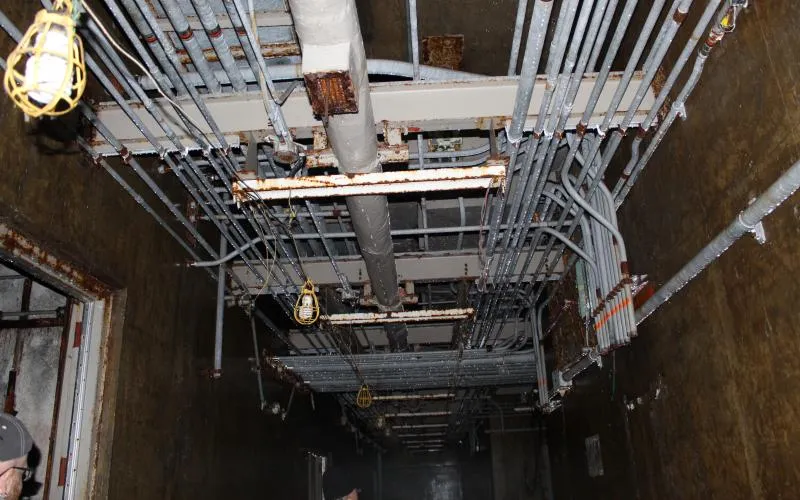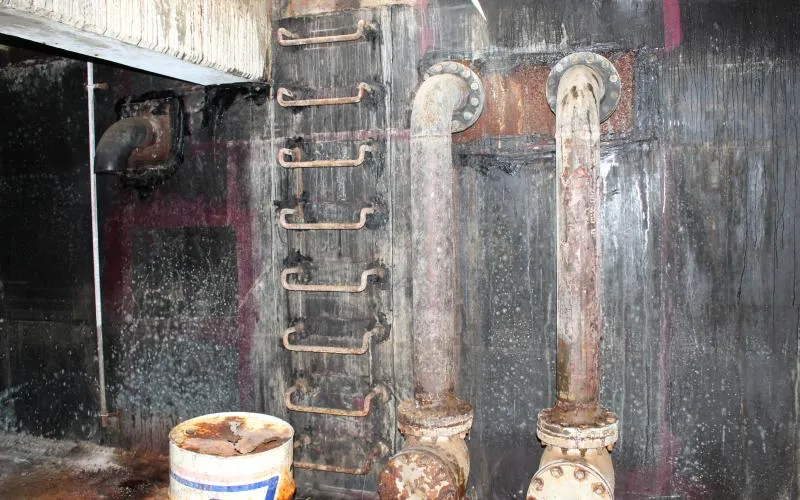You Could Own an Abandoned Cold War Missile Site in North Dakota
The 50-acre fixer-upper has potential as a tourist attraction or a pandemic bunker
:focal(396x201:397x202)/https://tf-cmsv2-smithsonianmag-media.s3.amazonaws.com/filer/86/14/86141acd-e991-4346-8206-82dfe9e045a3/landscape_4.jpeg)
During the Cold War, soldiers from the United States and the Soviet Union never battled directly. But tensions between the two countries ran high, and the threat of nuclear warfare loomed large.
As both parties raced to prepare for disaster, the U.S. turned its attention to a surprising place: the Great Plains. Between the 1950s and ’70s, government officials placed more than 1,000 missiles at launch sites scattered throughout the Dakotas and beyond, per the National Park Service.
One such potential doomsday hideout was Remote Sprint Launcher 4, a Cold War missile launch site and bunker in northeastern North Dakota. Decommissioned during the 1970s, the property has fallen into disrepair over the years. Now, however, its luck appears to be changing: As Jack Dura reports for the Bismarck Tribune, the history-making site is headed to the auction block.
According to Pifer’s Auction and Realty, the lot encompasses 49.48 acres of land, a number of Brutalist concrete buildings, a command bunker and a dual fence. It also houses the remains of 14 launch tubes for Sprint missiles—roughly 30-foot-long projectiles named for their short range.
“The idea was that if missiles were coming in from the Soviet Union over the Arctic, these were defensive missiles intended to shoot down anyone coming in,” Pifer’s realtor Dave Keller tells Atlas Obscura’s Isaac Schultz.
Remote Sprint Launcher 4 was once part of the Stanley R. Mickelsen Safeguard Complex, a multibillion dollar network of missile launch sites in North Dakota. Per the Tribune, it was one of four smaller sites designed to protect the nearby Nekoma base, which boasts an enormous missile control building constructed in the shape of a futuristic pyramid.
Leslie Volochenko, a handyman from Mandan in southern North Dakota, purchased Site 4 in 2012 with intentions of fixing it up for a doomsday scenario. But he rarely found time to visit the property, and now that he’s planning to move to Texas, he’s ready to sell.
Volochenko tells the Tribune that the site’s remote location has one clear advantage: “[A]t night, it’s nice. I sit and watch and look at the stars. They twinkle. You don’t get to see the stars here in Mandan as much. There’s a lot more of them.”
The area’s secluded nature played a key role in attracting the United States government nearly 50 years ago: As Keller explains to Atlas Obscura, authorities didn’t want curious citizens getting too close. The location was also closer to the Arctic, meaning that missiles had a better shot of reaching their target.
Bidding begins online and in-person on August 11. As the listing points out, this property will be a fixer-upper: Much of the site’s outdoor area is overgrown, and photos of the indoor sections show rusting metal, peeling paint and other signs of disrepair.
Still, Keller says that the listing has garnered a significant amount of interest from both history buffs and people seeking a fallout shelter.
“You’ve got COVID-19, you’ve got civil unrest—I got a call from one guy who thought this’d be a great place to have a server farm. It’s safe, secure, and tornado-proof,” he says, adding that “[i]t’s the ultimate in social distancing.”
As local television station Valley News Live reports, the auction listing does not include a starting price. But Keller tells the Tribune that he expects the property to do well.
The realtor adds, “It’s a really hardy piece of Cold War history.”
/https://tf-cmsv2-smithsonianmag-media.s3.amazonaws.com/accounts/headshot/nora.png)
/https://tf-cmsv2-smithsonianmag-media.s3.amazonaws.com/filer/fb/ee/fbeec0b6-f745-4047-a91d-9a62139c8809/danger.jpeg)

/https://tf-cmsv2-smithsonianmag-media.s3.amazonaws.com/filer/dd/e7/dde73bc6-5ec0-4885-b289-3293994b613b/map_of_property.jpg)
/https://tf-cmsv2-smithsonianmag-media.s3.amazonaws.com/filer/79/8e/798ec6b6-69e8-4830-b273-e75453a4fa2e/landscape_3.jpeg)

/https://tf-cmsv2-smithsonianmag-media.s3.amazonaws.com/accounts/headshot/nora.png)